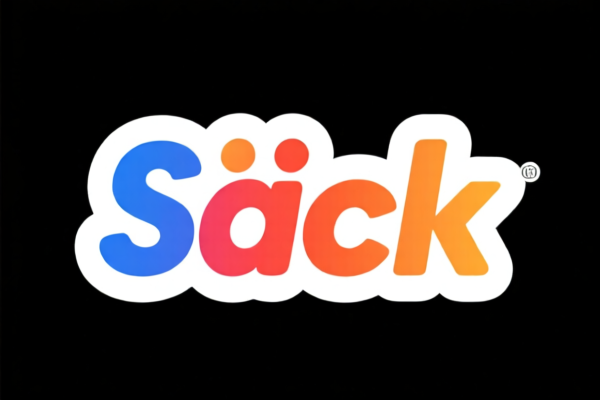| HS Code | Official Doc | Tariff Rate | Origin | Destination | Effective Date |
|---|---|---|---|---|---|
| 3919905060 | Doc | 60.8% | CN | US | 2025-05-12 |
| 3919905010 | Doc | 60.8% | CN | US | 2025-05-12 |
| 3921904010 | Doc | 34.2% | CN | US | 2025-05-12 |
| 3921905010 | Doc | 34.8% | CN | US | 2025-05-12 |
| 4016990500 | Doc | 40.9% | CN | US | 2025-05-12 |
| 9612101010 | Doc | 37.5% | CN | US | 2025-05-12 |
| 9612109090 | Doc | 45.4% | CN | US | 2025-05-12 |
| 4821102000 | Doc | 55.0% | CN | US | 2025-05-12 |
| 4821104000 | Doc | 55.0% | CN | US | 2025-05-12 |
| 4823901000 | Doc | 55.0% | CN | US | 2025-05-12 |
| 4823907000 | Doc | 55.0% | CN | US | 2025-05-12 |




Color Sticker
Color stickers are adhesive labels produced in a variety of colors, typically used for identification, decoration, or organization. They are commonly made from paper or vinyl, with an adhesive backing to allow them to stick to surfaces.
Material
- Paper: The most common and economical material. Paper stickers are suitable for temporary applications and are often used for crafts, labeling boxes for moving, or short-term promotions. They are generally less durable and water-resistant.
- Vinyl: More durable and water-resistant than paper stickers. Vinyl stickers are suitable for outdoor use, vehicle graphics, and applications requiring longevity. They can withstand exposure to sunlight, moisture, and abrasion.
- Polyester/Other Plastics: Offer high durability, resistance to chemicals, and extreme temperatures. Used in specialized applications like industrial labeling or asset tracking.
- Fabric: Used for clothing labels, promotional items, or applications requiring a softer texture.
Purpose
- Identification: Color-coding items for easy recognition (e.g., file folders, inventory, wires).
- Decoration: Used in scrapbooking, crafts, art projects, and personalizing items.
- Organization: Categorizing and labeling items for efficient storage and retrieval.
- Promotion: Branding, advertising, and product labeling.
- Safety/Warning: Highlighting important information or hazards.
Function
The primary function of a color sticker is to adhere to a surface and visually communicate information through color and, often, printed text or graphics. The adhesive properties vary depending on the sticker type, ranging from removable adhesives for temporary applications to permanent adhesives for long-lasting bonds.
Usage Scenarios
- Home Organization: Labeling containers, shelves, and drawers.
- Office/School: Color-coding files, folders, and documents.
- Retail: Product labeling, price tags, and promotional stickers.
- Manufacturing/Inventory: Identifying parts, tracking assets, and managing stock.
- Automotive: Vehicle graphics, decals, and warning labels.
- Arts and Crafts: Scrapbooking, card making, and decorating.
Common Types
- Die-Cut Stickers: Cut into specific shapes and designs.
- Sheet Stickers: Multiple stickers arranged on a single sheet.
- Roll Stickers: Continuous stickers on a roll, often used for high-volume applications.
- Removable Stickers: Designed to be easily removed without leaving residue.
- Permanent Stickers: Designed to provide a strong, long-lasting bond.
- Waterproof Stickers: Made from waterproof materials and adhesives.
- Bumper Stickers: Durable vinyl stickers designed for outdoor use on vehicles.
- Dot Stickers: Small, circular stickers used for color-coding or marking.
- Custom Stickers: Printed with specific designs, logos, or text according to customer requirements.
Based on the provided information, “color sticker” can be classified under several HS codes, depending on the material and specific characteristics. Here's a breakdown of potential classifications:
- 3919905060: This HS code covers self-adhesive plates, sheets, film, foil, tape, strip and other flat shapes, of plastics, whether or not in rolls, categorized as "Other: Other". This is applicable if the color sticker is made of plastic and has a self-adhesive backing. The total tax rate is 60.8% (Basic tariff: 5.8%, Additional tariff: 25.0%, Post-April 2, 2025, Additional tariff: 30.0%).
- 3919905010: This HS code also covers self-adhesive plates, sheets, film, foil, tape, strip and other flat shapes, of plastics, whether or not in rolls, specifically as "Other: Other Reflectorized sheeting". If the color sticker is reflectorized and made of plastic with a self-adhesive backing, this code applies. The total tax rate is 60.8% (Basic tariff: 5.8%, Additional tariff: 25.0%, Post-April 2, 2025, Additional tariff: 30.0%).
- 4821102000: This HS code covers paper and paperboard labels of all kinds, whether or not printed, specifically "Printed: Printed in whole or in part by a lithographic process". If the color sticker is made of paper or paperboard and printed using lithography, this code is applicable. The total tax rate is 55.0% (Basic tariff: 0.0%, Additional tariff: 25.0%, Post-April 2, 2025, Additional tariff: 30.0%).
- 4821104000: This HS code covers paper and paperboard labels of all kinds, whether or not printed, specifically "Printed: Other". If the color sticker is made of paper or paperboard and printed using a method other than lithography, this code applies. The total tax rate is 55.0% (Basic tariff: 0.0%, Additional tariff: 25.0%, Post-April 2, 2025, Additional tariff: 30.0%).
HS Code Structure Explanation:
- Chapter 39: Covers plastics and articles thereof.
- Heading 19: Covers self-adhesive plates, sheets, film, foil, tape, strip and other flat shapes, of plastics.
- Subheading 90: Further specifies the type of plastic articles.
- Chapter 48: Covers paper and paperboard; articles of paper pulp, paper, paperboard, cellulose wadding or webs of cellulose fibers.
- Heading 21: Covers labels of paper or paperboard.
Important Note:
When declaring color stickers, it is crucial to accurately determine the material composition (plastic or paper/paperboard) and the printing method used. If the sticker is made of plastic with a self-adhesive backing, codes 3919905060 or 3919905010 are applicable. If it's paper/paperboard, codes 4821102000 or 4821104000 apply.
Customer Reviews
No reviews yet.